Galeria de Mukul Banerjee (www.mukulbanerjee.com)
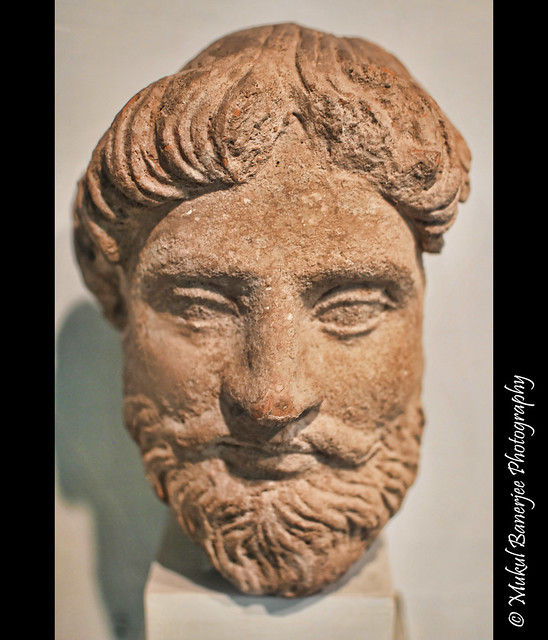
Statue, 2 BCE, Gandhara Empire
Gandhara is the name given to an ancient region or province invaded in 326 B.C. by Alexander the Great, who took Charsadda (ancient Puskalavati) near present-day Peshawar (ancient Purusapura) and then marched eastward across the Indus into the Punjab as far as the Beas river (ancient Vipasa). Gandhara constituted the undulating plains, irrigated by the Kabul River from the Khyber Pass area, the contemporary boundary between Pakistan and Afganistan, down to the Indus River and southward towards the Murree hills and Taxila (ancient Taksasila), near Pakistan"s present capital, Islamabad. Its art, however, during the first centuries of the Christian era, had adopted a substantially larger area, together with the upper stretches of the Kabul River, the valley of Kabul itself, and ancient Kapisa, as well as Swat and Buner towards the north.
A great deal of Gandhara sculptures has survived dating from the first to probably as late as the sixth or even the seventh century but in a remarkably homogeneous style. Most of the arts were almost always in a blue-gray mica schist, though sometimes in a green phyllite or in stucco, or very rarely in terracotta. Because of the appeal of its Western classical aesthetic for the British rulers of India, schooled to admire all things Greek and Roman, a great deal found its way into private hands or the shelter of museums.
Gandhara sculpture primarily comprised Buddhist monastic establishments. These monasteries provided a never-ending gallery for sculptured reliefs of the Buddha and Bodhisattvas. The Gandhara stupas were comparatively magnified and more intricate, but the most remarkable feature, which distinguished the Gandhara stupas from the pervious styles were hugely tiered umbrellas at its peak, almost soaring over the total structure. The abundance of Gandharan sculpture was an art, which originated with foreign artisans.
In the excavation among the varied miscellany of small bronze figures, though not often like Alexandrian imports, four or five Buddhist bronzes are very late in date. These further illustrate the aura of the Gandhara art. Relics of mural paintings though have been discovered, yet the only substantial body of painting, in Bamiyan, is moderately late, and much of it belongs to an Iranian or central Asian rather than an Indian context. Non-narrative themes and architectural ornament were omnipresent at that time. Mythical figures and animals such as atlantes, tritons, dragons, and sea serpents derive from the same source, although there is the occasional high-backed, stylized creature associated with the Central Asian animal style. Moldings and cornices are decorated mostly with acanthus, laurel, and vine, though sometimes with motifs of Indian, and occasionally ultimately western Asian, origin: stepped merlons, lion heads, vedikas, and lotus petals. It is worth noting that architectural elements such as pillars, gable ends, and domes as represented in the reliefs tend to follow the Indian forms
.
Gandhara became roughly a Holy Land of Buddhism and excluding a handful of Hindu images, sculpture took the form either of Buddhist sect objects, Buddha and Bodhisattvas, or of architectural embellishment for Buddhist monasteries. The more metaphorical kinds are demonstrated by small votive stupas, and bases teeming with stucco images and figurines that have lasted at Jaulian and Mora Moradu, outpost monasteries in the hills around Taxila. Hadda, near the present town of Jalalabad, has created some groups in stucco of an almost rococo while more latest works of art in baked clay, with strong Hellenistic influence, have been revealed there, in what sums up as tiny chapels. It is not known exactly why stucco, an imported Alexandrian modus operandi, was used. It is true that grey schist is not found near Taxila, however other stones are available, and in opposition to the ease of operating with stucco, predominantly the artistic effects which can be achieved, must be set with its impermanence- fresh deposits frequently had to be applied. Excluding possibly at Taxila, its use emerges to have been a late expansion.
Architectural fundamentals of the Gandhara art, like pillars, gable ends and domes as showcased in the reliefs, were inclined to follow Indian outlines, but the pilaster with capital of Corinthian type, abounds and in one-palace scene Persepolitan columns go along with Roman coffered ceilings. The so-called Shrine of the Double-Headed Eagle at Sirkap, in actuality a stupa pedestal, well demonstrates this enlightening eclecticism- the double-headed bird on top of the chaitya arch is an insignia of Scythian origin, which appears as a Byzantine motif and materialises much later in South India as the ga1J.qa-bheru1J.qa in addition to atop European armorial bearings.
In Gandhara art the descriptive friezes were all but invariably Buddhist, and hence Indian in substance- one depicted a horse on wheels nearing a doorway, which might have represented the Trojan horse affair, but this is under scan. The Dioscuri, Castor and Pollux, familiar from the previous Greek-based coinage of the region, appeared once or twice as standing figurines, presumably because as a pair, they tallied an Indian mithuna couple. There were also female statuettes, corresponding to city goddesses. Though figures from Butkara, near Saidan Sharif in Swat, were noticeably more Indian in physical type, and Indian motifs were in abundance there. Sculpture was, in the main, Hellenistic or Roman, and the art of Gandhara was indeed "the easternmost appearance of the art of the Roman Empire, especially in its late and provincial manifestations". Furthermore, naturalistic portrait heads, one of the high-points of Roman sculpture, were all but missing in Gandhara, in spite of the episodic separated head, probably that of a donor, with a discernible feeling of uniqueness. Some constitutions and poses matched those from western Asia and the Roman world; like the manner in which a figure in a recurrently instanced scene from the Dipankara jataka had prostrated himself before the future Buddha, is reverberated in the pose of the defeated before the defeater on a Trojanic frieze on the Arch of Constantine and in later illustrations of the admiration of the divinised emperor. One singular recurrently occurring muscular male figure, hand on sword, witnessed in three-quarters view from the backside, has been adopted from western classical sculpture. On occasions standing figures, even the Buddha, deceived the elusive stylistic actions of the Roman sculptor, seeking to express majestas. The drapery was fundamentally Western- the folds and volume of dangling garments were carved with realness and gusto- but it was mainly the persistent endeavours at illusionism, though frequently obscured by unrefined carving, which earmarked the Gandhara sculpture as based on a western classical visual impact.
The distinguishing Gandhara sculpture, of which hundreds if not thousands of instances have outlived, is the standing or seated Buddha. This flawlessly reproduces the necessary nature of Gandhara art, in which a religious and an artistic constituent, drawn from widely varied cultures have been bonded. The iconography is purely Indian. The seated Buddha is mostly cross-legged in the established Indian manner. However, forthcoming generations, habituated to think of the Buddha as a monk, and unable to picture him ever possessing long hair or donning a turban, came to deduce the chigon as a "cranial protuberance", singular to Buddha. But Buddha is never depicted with a shaved head, as are the Sangha, the monks; his short hair is clothed either in waves or in taut curls over his whole head. The extended ears are merely due to the downward thrust of the heavy ear-rings worn by a prince or magnate; the distortion of the ear-lobes is especially visible in Buddha, who, in Gandhara, never wore ear-rings or ornaments of any kind. As Foucher puts it, the Gandhara Buddha is at a time a monk without shaving and a prince stripped off jewellery.
The western classical factor rests in the style, in the handling of the robe, and in the physiognomy of Buddha. The cloak, which covers all but the appendages (though the right shoulder is often bared), is dealt like in Greek and Roman sculptures; the heavy folds are given a plastic flair of their own, and only in poorer or later works do they deteriorate into indented lines, fairly a return to standard Indian practice. The "western" treatment has caused Buddha"s garment to be misidentified for a toga; but a toga is semicircular, while, Buddha wore a basic, rectangular piece of cloth, i.e., the samghiifi, a monk"s upper garment. The head gradually swerves towards a hieratic stylisation, but at its best, it is naturalistic and almost positively based on the Greek Apollo, undoubtedly in Hellenistic or Roman copies.
Gandhara art also had developed at least two species of image, i.e. not part of the frieze, in which Buddha is the fundamental figure of an event in his life, distinguished by accompanying figures and a detailed mise-en-scene. Perhaps the most remarkable amongst these is the Visit to the Indrasala Cave, of which the supreme example is dated in the year 89, almost unquestionably of the Kanishka period. Indra and his harpist are depicted on their visit in it. The small statuettes of the visitors emerge below, an elephant describing Indra. The more general among these detailed images, of which approximately 30 instances are known, is presumably related with the Great Miracle of Sravasti. In one such example, one of the adjoining Bodhisattvas is distinguished as Avalokiteshwara by the tiny seated Buddha in his headgear. Other features of these images include the unreal species of tree above Buddha, the spiky lotus upon which he sits, and the effortlessly identifiable figurines of Indra and Brahma on both sides.
Another important aspect of the Gandhara art was the coins of the Graeco-Bactrians. The coins of the Graeco-Bactrians - on the Greek metrological standard, equals the finest Attic examples and of the Indo-Greek kings, which have until lately served as the only instances of Greek art found in the subcontinent. The legendary silver double decadrachmas of Amyntas, possibly a remembrance issue, are the biggest "Greek" coins ever minted, the largest cast in gold, is the exceptional decadrachma of the same king in the Bibliotheque Nationale, with the Dioscuri on the inverse. Otherwise, there was scanty evidence until recently of Greek or Hellenistic influences in Gandhara. A manifestation of Greek metropolitan planning is furnished by the rectilinear layouts of two cities of the 1st centuries B.C./A.D.--Sirkap at Taxila and Shaikhan Pheri at Charsadda. Remains of the temple at Jandial, also at Taxila and presumably dating back to 1st century B.C., also includes Greek characteristics- remarkably the huge base mouldings and the Ionic capitals of the colossal portico and antechamber columns. In contrast, the columns or pilasters on the immeasurable Gandhara friezes (when they are not in a Indian style), are consistently coronated by Indo-Corinthian capitals, the local version of the Corinthian capital- a certain sign of a comparatively later date.
The notable Begram hoard confirms articulately to the number and multiplicity of origin of the foreign artefacts imported into Gandhara. This further illustrates the foreign influence in the Gandhara art. Parallel hoards have been found in peninsular India, especially in Kolhapur in Maharashtra, but the imported wares are sternly from the Roman world. At Begram the ancient Kapisa, near Kabul, there are bronzes, possibly of Alexandrian manufacture, in close proximity with emblemata (plaster discs, certainly meant as moulds for local silversmiths), bearing reliefs in the purest classical vein, Chinese lacquers and Roman glass. The hoard was possibly sealed in mid-3rd century, when some of the subjects may have been approximately 200 years old "antiques", frequently themselves replicates of classical Greek objects. The plentiful ivories, consisting in the central of chest and throne facings, engraved in a number of varied relief techniques, were credibly developed somewhere between Mathura and coastal Andhra. Some are of unrivalled beauty. Even though a few secluded instances of early Indian ivory carving have outlived, including the legendary mirror handle from Pompeii, the Begram ivories are the only substantial collection known until moderately in present times of what must always have been a widespread craft. Other sites, particularly Taxila, have generated great many instances of such imports, some from India, some, like the appealing tiny bronze figure of Harpocrates, undoubtedly from Alexandria. Further cultural influences are authenticated by the Scytho Sarmatian jewellery, with its characteristic high-backed carnivores, and by a statue of St. Peter. But all this should not cloud the all-important truth that the immediately identifiable Gandhara style was the prevailing form of artistic manifestation throughout the expanse for several centuries, and the magnitude of its influence on the art of central Asia and China and as far as Japan, allows no doubt about its integrity and vitality.
In the Gandhara art early Buddhist iconography drew heavily on traditional sources, incorporating Hindu gods and goddesses into a Buddhist pantheon and adapting old folk tales to Buddhist religious purposes. Kubera and Harm are probably the best-known examples of this process.
Five dated idols from Gandhara art though exist, however the hitch remains that the era is never distinguished. The dates are in figures under 100 or else in 300s. Moreover one of the higher numbers are debatable, besides, the image upon which it is engraved is not in the conventional Andhra style. The two low-number-dated idols are the most sophisticated and the least injured. Their pattern is classical Gandhara. The most undemanding rendition of their dates relates them to Kanishka and 78 A.D. is assumed as the commencement of his era. They both fall in the second half of the 2nd century A.D. and equally later, if a later date is necessitated for the beginning of Kanishka`s time. This calculation nearly parallels numismatics and archaeological evidences. The application of other eras, like the Vikrama (base date- 58 B.C.) and the Saka (base date- 78 A.D.), would place them much later. The badly battered figurines portray standing Buddhas, without a head of its own, but both on original figured plinths. They come to view as depicting the classical Gandhara style; decision regarding where to place these two dated Buddhas, both standing, must remain knotty till more evidence comes out as to how late the classical Gandhara panache had continued.
Methodical study of the Gandhara art, and specifically about its origins and expansion, is befuddled with numerous problems, not at least of which is the inordinately complex history and culture of the province. It is one of the great ethnical crossroads of the world simultaneously being in the path of all the intrusions of India for over three millennia. Bussagli has rightly remarked, `More than any other Indian region, Gandhara was a participant in the political and cultural events that concerned the rest of the Asian continent`.
However, Systematic study of the art of Gandhara, and particularly of its origins and development, is bedeviled by many problems, not the least of which is the extraordinarily complex history and culture of the region.
In spite of the labours of many scholars over the past hundred and fifty years, the answers to some of the most important questions, such as the number of centuries spanned by the art of Gandhara, still await, fresh archaeological, inscriptional, or numismatic evidence.
en.wikipedia.org/wiki/Gandhara

Statue, 2 BCE, Gandhara Empire
en.wikipedia.org/wiki/Gandhara
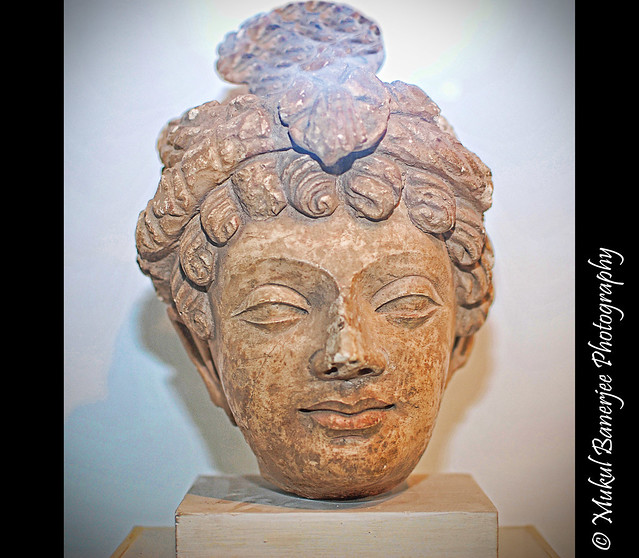
Statue, 2 -1 BCE, Gandhara Empire
en.wikipedia.org/wiki/Gandhara
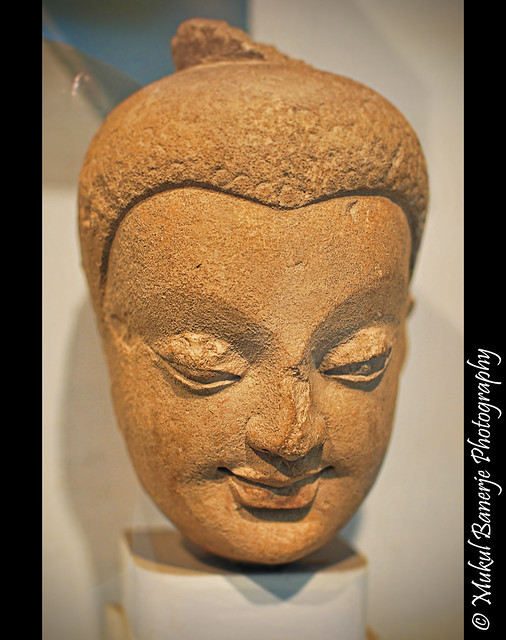
Gautam Buddha Statue, 2 -1 BCE, Gandhara Empire
en.wikipedia.org/wiki/Gandhara
en.wikipedia.org/wiki/Gautama_Buddha
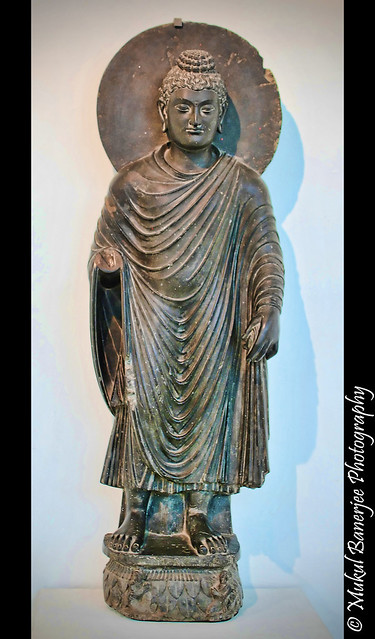
Gautam Buddha Statue, 2 -1 BCE, Gandhara Empire
en.wikipedia.org/wiki/Gandhara
en.wikipedia.org/wiki/Gautama_Buddha
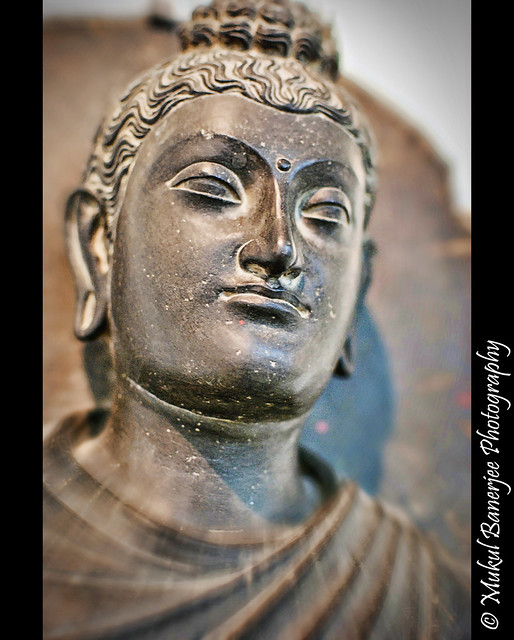
Gautam Buddha Statue, 2 -1 BCE, Gandhara Empire
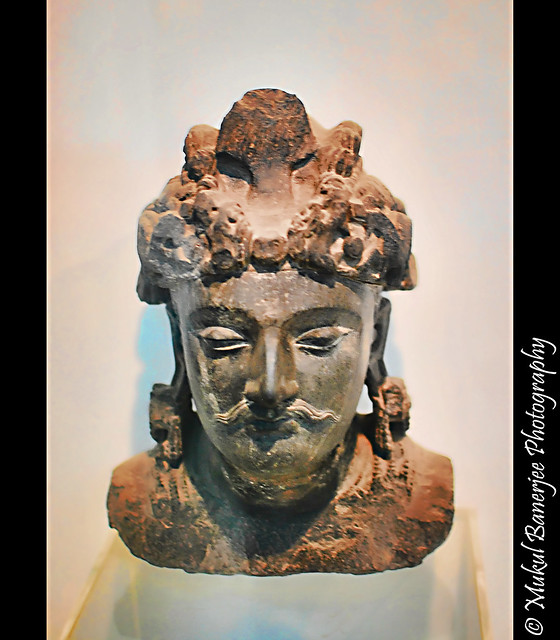
Siddhartha Statue, 2 -1 BCE, Gandhara Empire
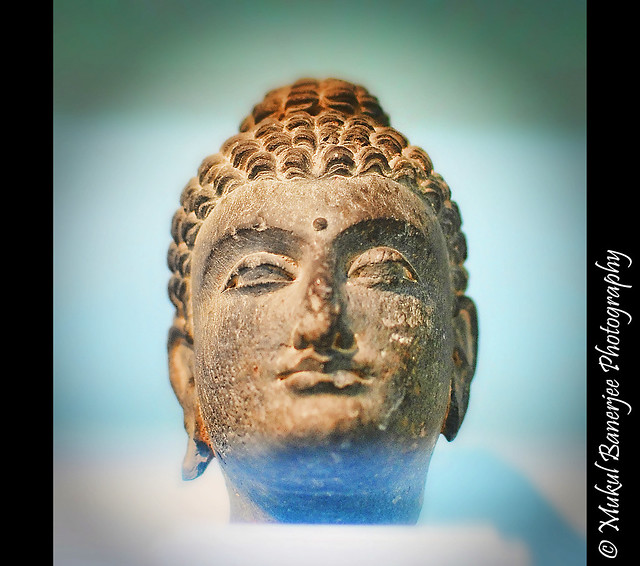
Gautam Buddha, 1 CE, Gandhara Empire
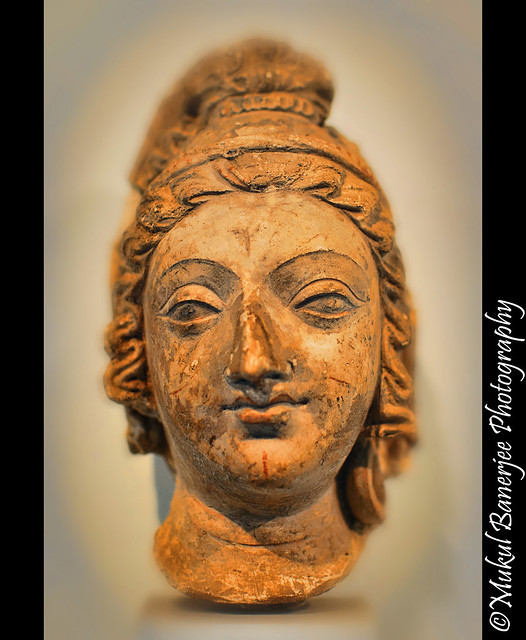
Head of a youth Gandhara. 2nd-3rd c. CE. Stucco.
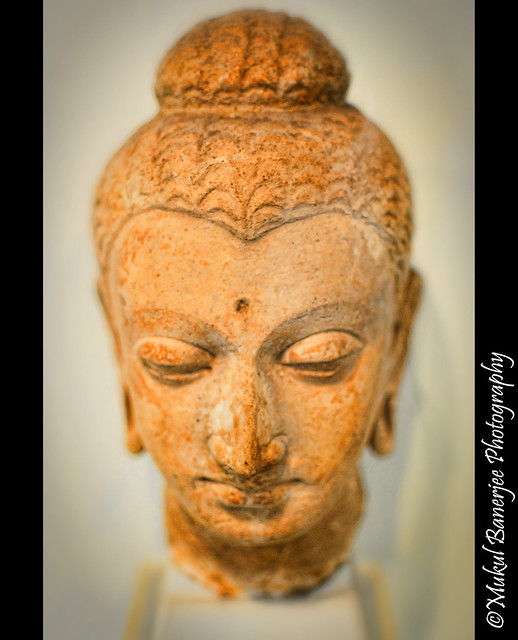
Bust Gautam Buddha Statue, 1 CE, Gandhara Empire
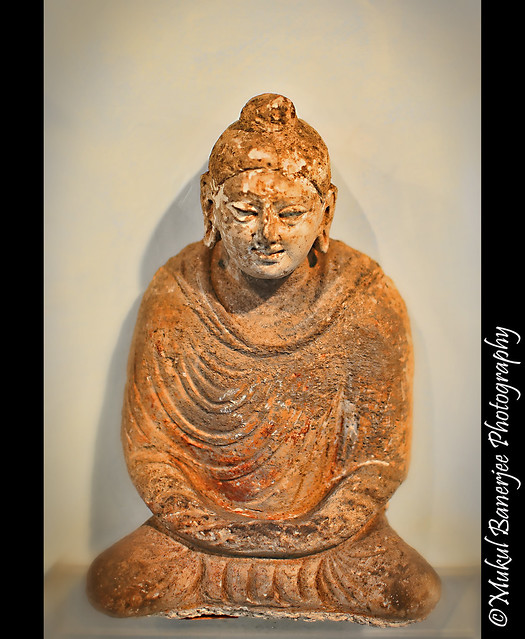
The Buddha, Gandhara. Kushana (2nd c. CE)
| The Ultimate Self Realization Course (tm) | | |
| Special New Release--Hear It Right Now!! | Special Announcements!
| See Sankarshan Prabhu's | |
| Get Krishna's Special Mercy by Rendering Devotional Service If you'd like to contribute something to help cover the expenses of Sankarshan Prabhu's European Lecture Series you can | On the order of his spiritual master, Srila Prabhupada, Sankarshan Prabhu has dedicated his life for the most urgent work of spreading Krishna consciousness all over the world. The more that Krishna consciousness spreads, the more that the suffering, scarcity, and hate on this planet will be replaced with bliss, abundance and love. This is a golden opportunity for us to do the highest good for all living beings and receive the special blessings of the Lord. Therefore we should, as much as possible, sacrifice our time, energy, and resources to assist Sankarshan Prabhu in his most important work. If you would like to help out to any extent, little or big, kindly inform Sankarshan Prabhu of your desire. | Meet If you would like to meet Sankarshan Prabhu or hear his lectures, you may contact us directly for an appointment or specific information on where and when his lectures will be held. | |
| Do You Have Questions or Need Guidance? | All inquiries are welcome. | Contact Information: Phone: 1-512-835-2121 or Email your questions |

 Sri Krishna Janmastami
Sri Krishna Janmastami Maha Kalash Abhisekha
Annual Patron Member Puja You are cordially invited to sponsor a Golden Kalash to bathe Sri Sri Radha Krishna, on the most auspicious day of
Sri Krishna Janmastami
(September 4, 2007)
This is a wonderful chance for you and your family to sponsor a beautiful bathing ceremony for Sri Sri Radha and Krishna. With your generous sponsorship, you will get to keep the sacred Kalash that the temple priest uses to bathe the Lord on your behalf. We will mail you your golden Kalash along with a wonderful assortment of prasadam sweets that will be offered to Sri Sri Radha Krishna on Janmastami. Your tax deductible contribution with help us to maintain and develop the worship of Lord Krishna.
Your golden Kalash is an amazingly beautiful transcendental work of art that your family will treasure for many generations. It will be shipped to you in a red velvet box as seen above:
There is a very limited supply. So if you would like to to sponsor a Kalash, do so right away before they are all taken: www.backtohome.com/KalashToday's Thought - December 2007
Today's Thought - November 2007
Today's Thought - October 2007
Today's Thought - September 2007
Today's Thought - August 2007
Today's Thought - July 2007
Today's Thought - June 2007
Today's Thought - May 2007
Today's Thought - April 2007
Today's Thought - March 2007
Today's Thought - February 2007
Today's Thought - January 2007


TABLA - FUENTES - FONTS
SOUV2
- SOUV2P.TTF - 57 KB
- SOUV2I.TTF - 59 KB
- SOUV2B.TTF - 56 KB
- SOUV2T.TTF - 56 KB
- bai_____.ttf - 46 KB
- babi____.ttf - 47 KB
- bab_____.ttf - 45 KB
- balaram_.ttf - 45 KB
- SCAGRG__.TTF - 73 KB
- SCAGI__.TTF - 71 KB
- SCAGB__.TTF - 68 KB
- inbenr11.ttf - 64 KB
- inbeno11.ttf - 12 KB
- inbeni11.ttf - 12 KB
- inbenb11.ttf - 66 KB
- indevr20.ttf - 53 KB
- Greek font: BibliaLS Normal
- Greek font: BibliaLS Bold
- Greek font: BibliaLS Bold Italic
- Greek font: BibliaLS Italic
- Hebrew font: Ezra SIL
- Hebrew font: Ezra SIL SR
Disculpen las Molestias

Sankarshan Das Adhikari - ANUAL
Conceptos Hinduistas (1428)SC
Aa-Anc · Aga - Ahy · Ai - Akshay · Akshe - Amshum · Ana - Ancie · Ang - Asvayu · Ata - Az · Baa-Baz · Be-Bhak · Bhal-Bu · C · Daa-Daz · De · Dha-Dry · Du-Dy · E · F · Gaa-Gayu · Ge-Gy · Ha-He · Hi-Hy · I · J · K · Ka - Kam · Kan - Khatu · Ki - Ko · Kr - Ku · L · M · N · O · P · R · S · Saa-San · Sap-Shy · Si-Sy · Ta - Te · U · V · Ve-Vy · Y · Z
Conceptos Hinduistas (2919) SK
Aa-Ag · Ah-Am · Ana-Anc · And-Anu · Ap-Ar · As-Ax · Ay-Az · Baa-Baq · Bar-Baz · Be-Bhak · Bhal-Bhy · Bo-Bu · Bra · Brh-Bry · Bu-Bz · Caa-Caq · Car-Cay · Ce-Cha · Che-Chi · Cho-Chu · Ci-Cn · Co-Cy · Daa-Dan · Dar-Day · De · Dha- Dny · Do-Dy · Ea-Eo · Ep-Ez · Faa-Fy · Gaa-Gaq · Gar-Gaz · Ge-Gn · Go · Gra-Gy · Haa-Haq · Har-Haz · He-Hindk · Hindu-Histo · Ho-Hy · Ia-Iq · Ir- Is · It-Iy · Jaa- Jaq · Jar-Jay · Je-Jn · Jo-Jy · Kaa-Kaq · Kar-Kaz · Ke-Kh · Ko · Kr · Ku - Kz · Laa-Laq · Lar-Lay · Le-Ln · Lo-Ly · Maa-Mag · Mah · Mai-Maj · Mak-Maq · Mar-Maz · Mb-Mn · Mo-Mz · Naa-Naq · Nar-Naz · Nb-Nn · No-Nz · Oa-Oz · Paa-Paq · Par-Paz · Pe-Ph · Po-Py · Raa-Raq · Rar-Raz · Re-Rn · Ro-Ry · Saa-Sam · San-Sar · Sas-Sg · Sha-Shy · Sia-Sil · Sim-Sn · So - Sq · Sr - St · Su-Sz · Taa-Taq · Tar-Tay · Te-Tn · To-Ty · Ua-Uq · Ur-Us · Vaa-Vaq · Var-Vaz · Ve · Vi-Vn · Vo-Vy · Waa-Wi · Wo-Wy · Yaa-Yav · Ye-Yiy · Yo-Yu · Zaa-Zy





No hay comentarios:
Publicar un comentario